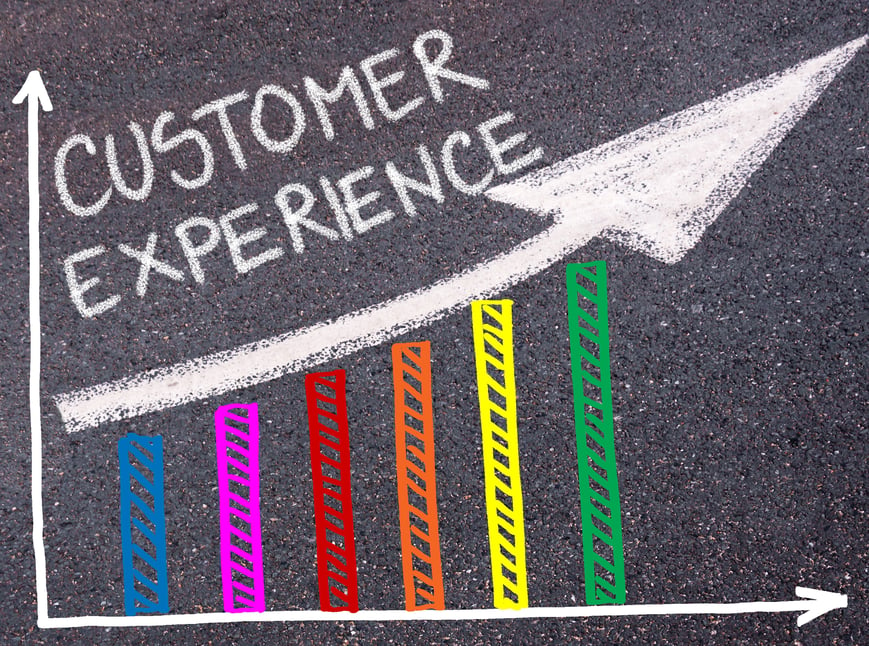
In the first part of this blog series, Defining a Great Customer Experience – Starting at the Top, we talked about the difficulties in defining a great customer experience, how it's more than just “Delivery > Expectations, and how a great experience starts at the top of the company’s funnel. The expectations provided during the Awareness, Consideration, and Intent [to purchase] phases of the sales funnel process set the stage for Purchase/Conversion and bottom of the funnel interactions. But when most people think of Customer Experiences, both from the business and the end consumer perspective, they relate to the Purchase through the Support portion of the funnel.
For the last 12+ years, I have been studying the most recognized service organizations, and have determined 6 traits of the Greatest Customer Experience Providers. In Part 2 of the blog series I went through the first three: Clear Priorities, Culture, Vision, and Standards and Value Defined from the Customer’s View. In this final, Part 3 of the blog series I will share traits 4, 5 and 6.
Great Customer Experience Trait #4: Reinforce Beliefs Through Associates
The great customer experience traits really start compounding at this point. Yes, customer centric metrics needs to start with the right priorities and strong standards, however, you cannot reach the fourth trait without having a solid understanding of the first three traits of a great experience. You need to understand where a customer experience fits in priorities; you need to understand and internalize values, and you need to focus on the right things to be able to reinforce your beliefs through your associates. There is a reason why the United Airlines experience is different from Jetblue's or Southwest’s. Jetblue and Southwest take the knowledge of the first three traits and continuously reinforce their customer experience beliefs through all of their associates, from executive to baggage handler. Values and standards on a wall are good, but their real power exists when an associate uses the same decision making criteria as their executive. If your values are real, internalized and reinforced, associates can act with the priorities and vision in mind. How are your priorities, vision, standards, values, and customer centric metrics driven through to the associates? Are they a part of your performance management program? Are your incentives related to your standards? Is the trade off scenario frequently posed to associates in a safe environment? Wells Fargo now understands what happens when it is not.
Great Customer Experience Trait #5: Infrastructure Supports Priorities, Vision, Goals, and Beliefs
Again, it's all well and good if you have the right mindset, goals, and beliefs, but you need the right infrastructure to deliver the experience. I am not saying you need the best or newest in technology to deliver, but it may help. Infrastructure is much, much more than technology. Infrastructure is how your People, Process, and Technology work together. You cannot say you are going to deliver a great customer experience, then only do quality monitoring on 3 random calls of each of your agents. You cannot ensure you are going have successful associates if you your manager to associate ratio is 25:1. You cannot deliver a great experience if your processes do not support customer centric metrics first. If your associates are consistently uncomfortable in your environment, they will never stay or be happy or be there to happily help a customer. If your dashboard, doesn’t contain your people metrics (morale, engagement, transitions), you really don’t care about them in your success. If you IVR has 15 menus, and exists to deflect calls, you cannot deliver a great experience. If social media is only handled by Marketing, you will very likely not provide a great customer experience.
You need to build your infrastructure from the foundation built in the first four traits. USAA probably does this better than almost anyone, and why they consistently have the highest NPS of any financial organization. Their infrastructure has been created and constantly improved to deliver for the customer. An example is that every time a marketing campaign is sent to a customer, the same campaign is sent to the customer’s account in their customer support system. So if a customer contacts USAA about a mailer, the agent knows exactly which one of a hundred different mailer this customer received, can talk to the mailer appropriately, and can let the customer know they understand their viewpoint.
Great Customer Experience Trait #6: Great Experiences are Marketed
It took me a much longer time to understand this as one of the 6 traits of great customer experience. For a long time, I believed there were only the first five. But as I worked with many really good experience companies, I wasn’t exactly sure why they were never considered (by others) as great. Why is Zappos considered the beacon of a great experience? Many companies exhibit the same values in service. Many companies are as friendly, have a great customer first mindset, and deliver consistently. The difference is Marketing; whether the marketing is owned, earned or paid for. Now, Zappos has definitely earned many of their accolades, but how did the story of the 10 hour customer service call get out to the masses. It may have happened naturally, but I am sure someone in Public Relations or Marketing realized this supported their greater value proposition, and helped the story travel. If you truly want to be considered a great customer experience company, people need to know you are one. If you want to see this trait in real time, think about every Comcast/Xfinity commercial and marketing piece created in the last 2 years. Comcast, like most of the cable and media companies, has a horrible reputation and consistently low customer satisfaction and net promoter scores. In actuality, Comcast service for the past few years is pretty good. They now arrive on time, service rarely goes down, and have a very comprehensive customer access strategy and tools. Their push is to improve their perception.
The 6 traits of great customer experience providers is not checklist, but it is what many of the top providers have in common. The traits do provide a great start towards building a great experience. These traits will also survive tests of time, as long as the companies maintain their priorities, values, and focus. The companies that demonstrate consistently great amazing virtuous cycles with their customers. With each experience, their value is reinforced. With each interaction, they ensure the customer will WANT to experience this again. Even small mistakes are forgiven, and are given a chance to amaze the customer again. How many of the 6 traits does your company demonstrate? How do you move to the 8% that customers actually think provide a great experience?

